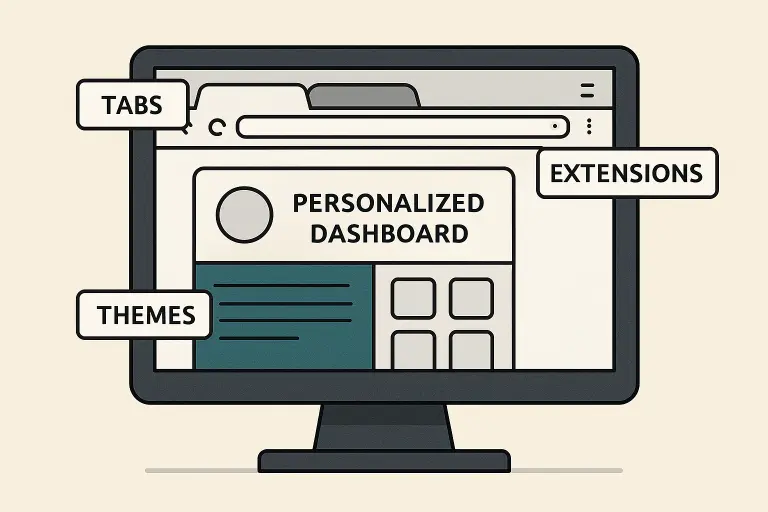Table of Contents
- The Rise of Customizable Browsers in Today’s Digital Age
- What Does ‘Customizable’ Really Mean in Browsers?
- Key Benefits of Personalizing Your Browser
- Must-Have Customization Features for Power Users
- Privacy, Security, and Smart Browsing
- Make the Browser Work for You
The Rise of Customizable Browsers in Today’s Digital Age
Over the past decade, digital routines have undergone rapid evolution, transforming traditional web browsers from simple gateways to the internet into powerful, customizable platforms. As online habits vary widely and multitasking, privacy, and efficiency become priorities, one-size-fits-all browsers no longer suffice. Customizable browsers have emerged to help users personalize their experience, boosting productivity and reducing digital clutter. Market leaders and specialized alternatives, such as Shift Browser, are gaining popularity by enabling seamless app integration, improved notification management, and flexible workspace environments. Modern browsers have evolved beyond basic navigation to offer powerful multitasking tools, enhanced privacy, and extensive customization. These features create a user-centric experience that benefits both professionals and everyday users by enabling personalized dashboards, automated workflows, and integrated task management. This helps users manage the growing volume of online information more efficiently and intuitively.
What Does ‘Customizable’ Really Mean in Browsers?
Customization in browsers means more than picking a color or background image—it’s about shaping how you interact with the web. At its core, a customizable browser enables you to modify settings and features, allowing browsing to align with your habits, preferences, and goals. Basic customization options may include selecting a theme or rearranging your homepage. Still, advanced functionality includes downloading extensions, managing tabs, and building a workflow that puts all your essential tools into one place.
Popular customization features include:
- Themes: Visual redesigns that make the interface uniquely yours.
- Extensions and Add-ons: Mini-applications embedded in browsers for specific functions—such as ad blocking, grammar checking, or password management.
- Layout Control: Rearranging toolbars, pinning frequently used tabs, or creating split-screen views.
- Personalized Dashboards: Integrating calendars, emails, and to-do lists directly on your browser’s homepage.
Key Benefits of Personalizing Your Browser
Personalization brings significant benefits: it enables you to work smarter by reducing distractions, automating repetitive tasks, and placing your most frequently used features front and center. Browser customization can significantly improve user efficiency, satisfaction, and overall experience. Users report feeling less overwhelmed and more focused on completing essential tasks.
Customization also enhances privacy—allowing you to block unwanted trackers, control cookies, and keep your most sensitive information protected. By streamlining your environment, personalization helps cut digital noise, making online time more productive and less stressful.
Must-Have Customization Features for Power Users
Power users often require their browsers to function as productivity powerhouses. Some must-have features include:
- Advanced Tab Management: Tools to group, mute, search, or hibernate tabs reduce browser overload and memory drain.
- Third-Party App Integration: Bringing together messaging, project management, and cloud storage platforms in one place for seamless access.
- Custom Notification Controls: Tailoring which apps or sites can send notifications, keeping distractions manageable.
- Keyboard Shortcuts: Personalizing hotkeys speeds up navigation and repetitive actions.
- Automation Scripts: Automating logins, form-filling, or complex workflows to save valuable time.
Privacy, Security, and Smart Browsing
Customization isn’t just about aesthetics or productivity—it’s also a key factor in protecting your privacy. Effective browser setups empower users to control how much personal information websites can access. Popular privacy tools include tracker-blocking, private browsing modes, and encrypted password managers.
To stay safe, regularly update your browser and extensions, remove those you no longer use, and activate security-focused settings. Browsers with dedicated privacy dashboards make it easier to review and adjust permissions on the fly, ensuring smarter, more secure browsing sessions.
Make the Browser Work for You
A custom browser experience is no longer a luxury—it’s a necessity for navigating modern digital life with confidence. By leveraging the wide range of browser settings, extensions, and layout options, you can create a workspace that accelerates productivity, prioritizes security, and complements your personal style.
Take the time to explore your browser’s settings and experiment with different tools. Whether you’re a power user or just getting started, personalizing your browser is a straightforward way to transform online routines—and make the internet work for you.
Also Read-Tech Console DefStartup: Empowering Gaming Innovation


